Typical calculations
This page contains a few applications using 4A/OP. 4A/OP processing is controlled by a set of global variables that identify required input data files and a file of run parameters. The user defines these variables through a script file or a Graphical User Interface (GUI).
- Input data include algorithm fixed and user data.
Algorithm fixed input data provide information for:
- Optical thickness atlases
- Reference thermodynamical parameters used for the computation of atlases
- Default gas mixing ratio
User input data are:
- Atmospheric profiles (on user-defined pressure levels)
- Temperature (Click to see other examples)
- Mixing ratio of any species supported by GEISA 2008 (Click to see other examples)
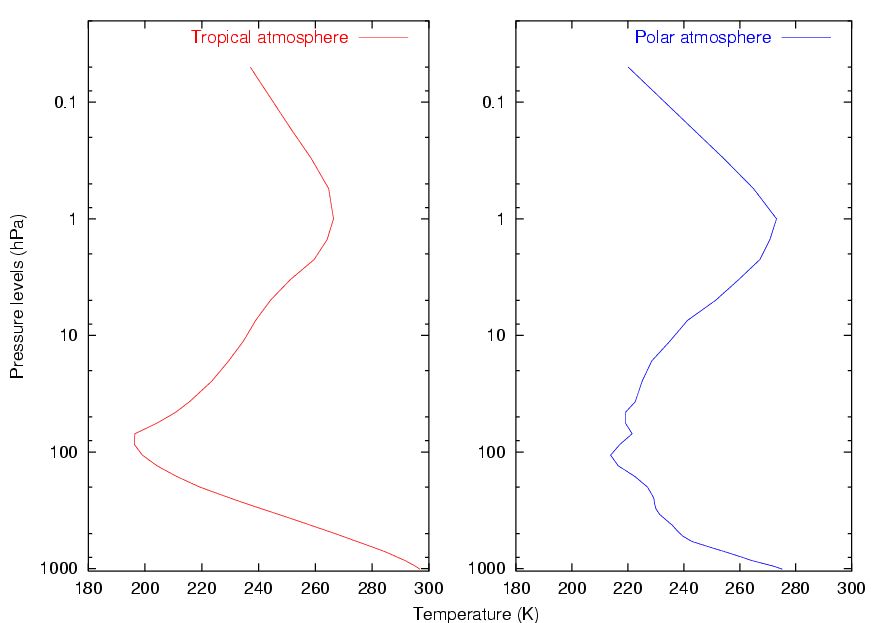
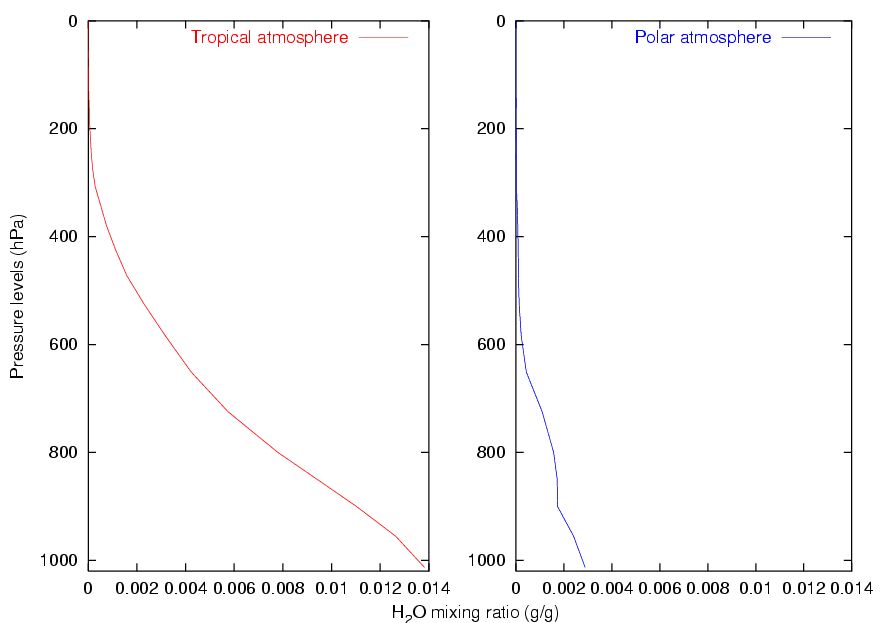
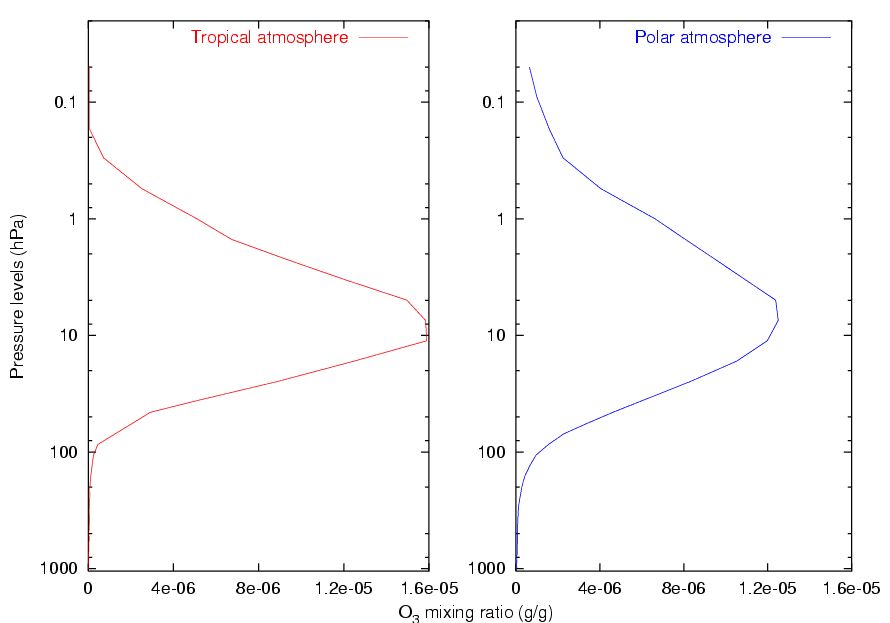
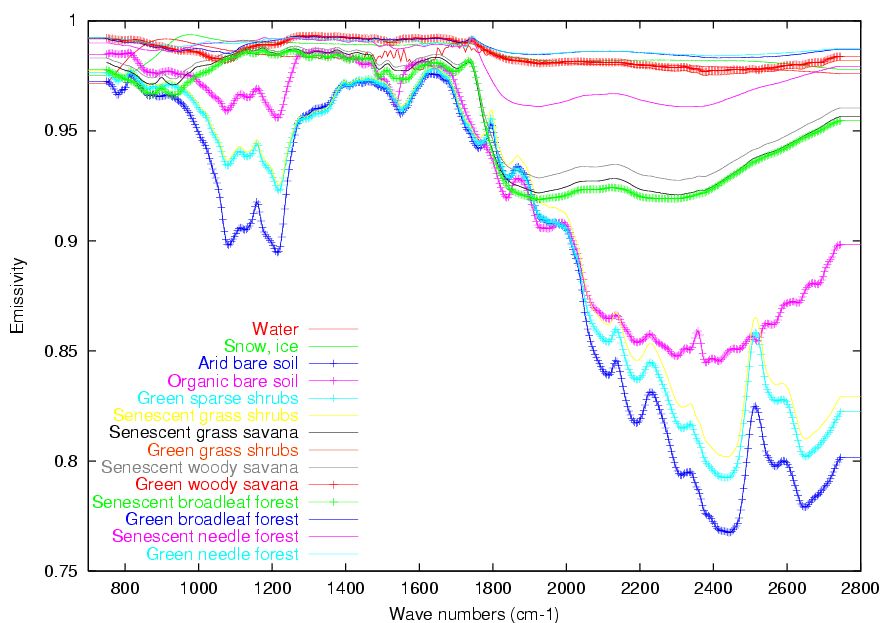
- Instrumental functions if it is necessary
Radiometer examples
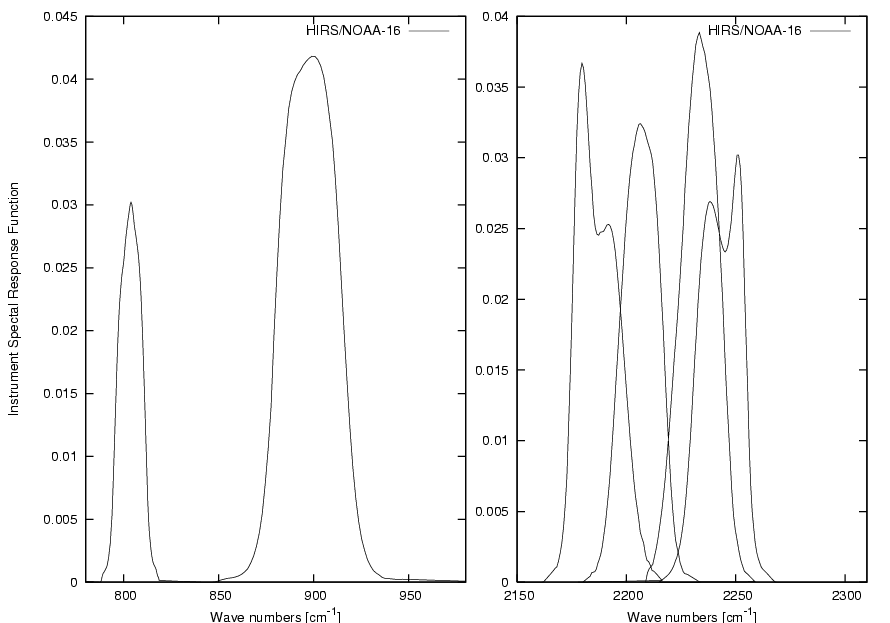
for selected IR channels
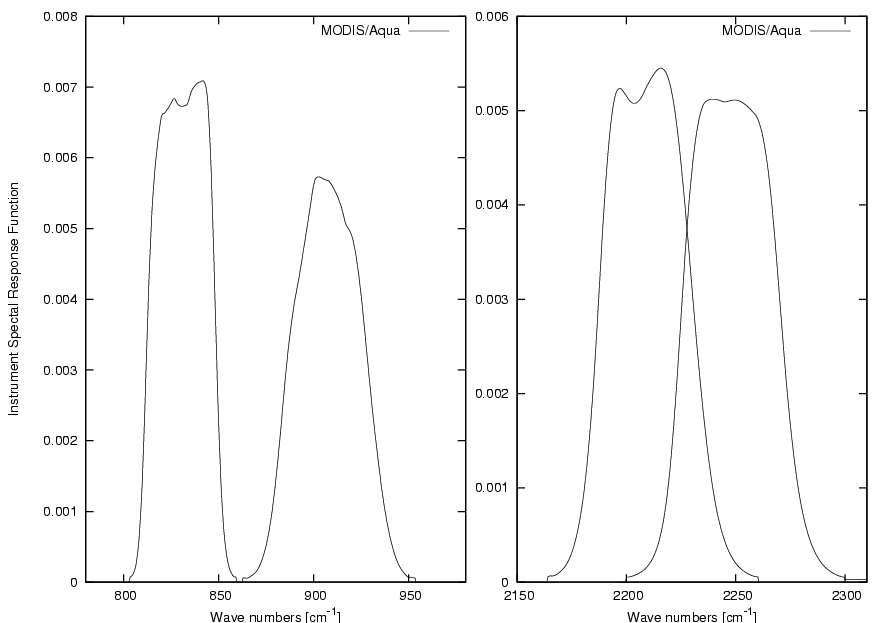
for selected IR channels
Interferometer / spectrometer examples
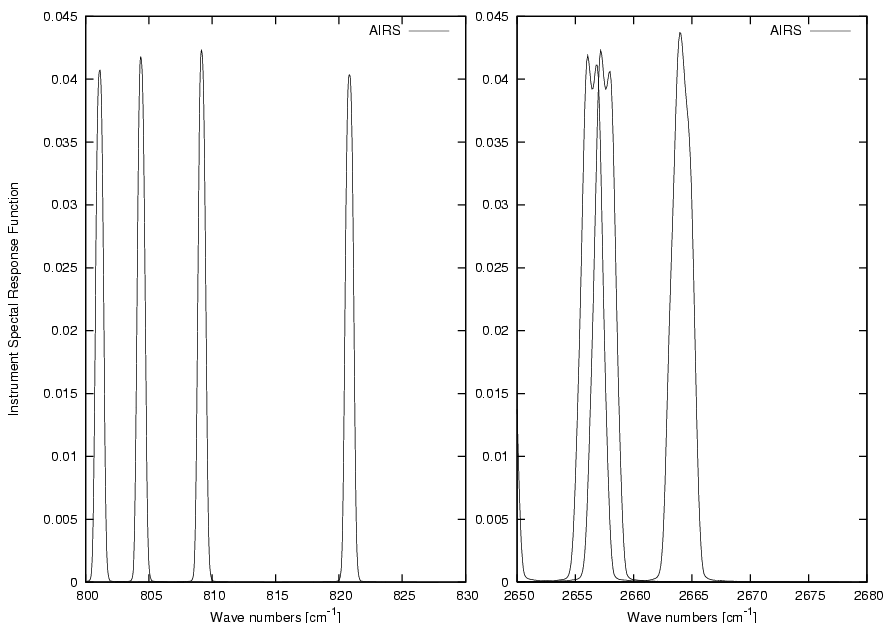
for a set of wave numbers
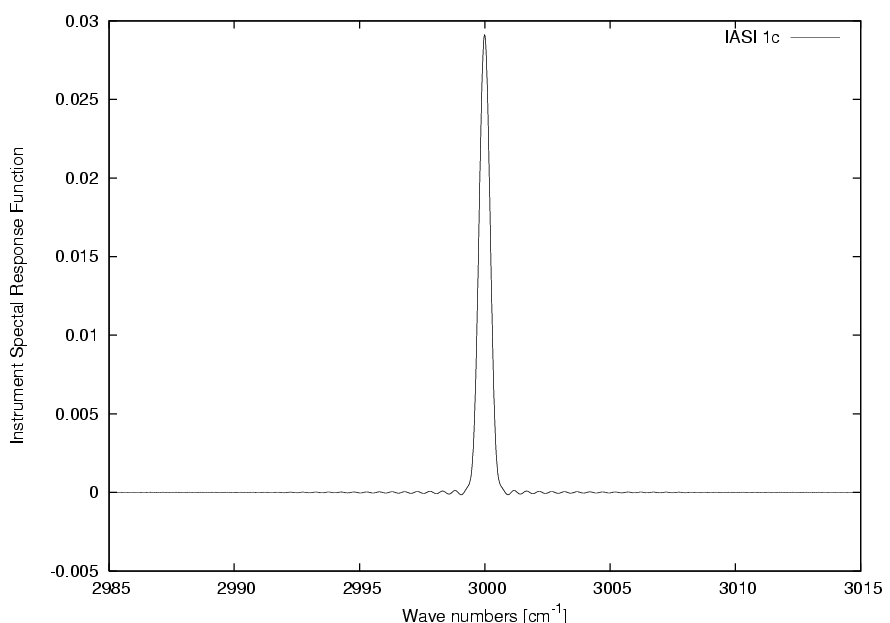
for a given wave number
- Simulation definition parameters
- Spectral conditions
- Observation configuration
- Output data depend on the simulation case.
“Pseudo-infinite” case:
- High resolution spectra (radiances and brightness temperatures)
“Instrument” case:
- Convolved spectra (radiances and brightness temperatures)
- Jacobians on user-defined pressure layers (partial derivatives of the radiance with respect to the temperature, the gas mixing ratio and the surface emissivity)
- Transmittances on user-defined pressure layers
Examples
The examples provide illustrations of both the input and output files. See the content of each input file for a description of simulation definition parameters. We present several examples of how to use 4A/OP.
Example 1
As a first example, here is the high-resolution radiance (in equivalent brightness temperature) computed from 719 to 721 cm-1 for five TIGR standard profiles (see figures 1 and 2). The results are shown in figure 3. Figure 4 displays the same simulation conditions but for another spectral domain. Click here to see the input parameter file corresponding to the first spectral domain.
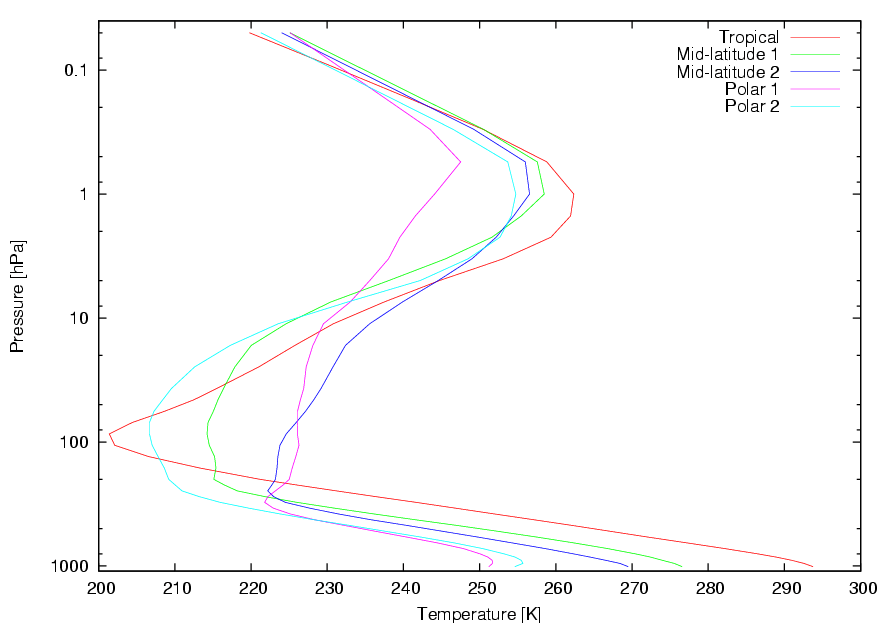
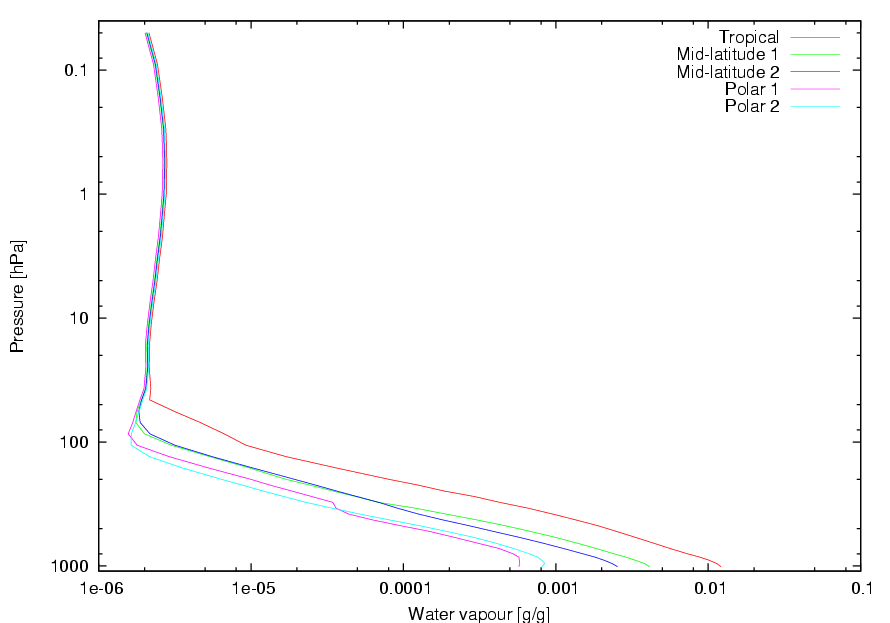
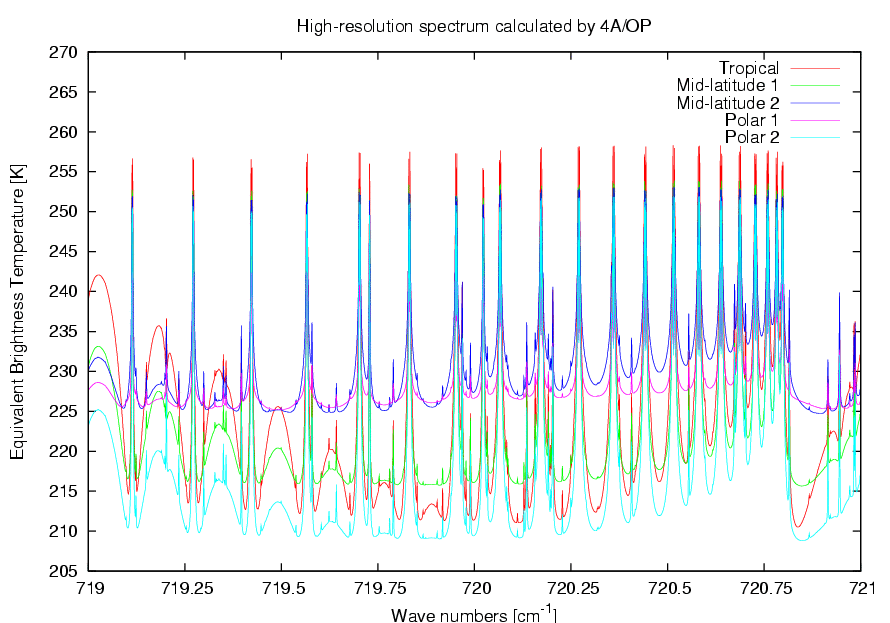
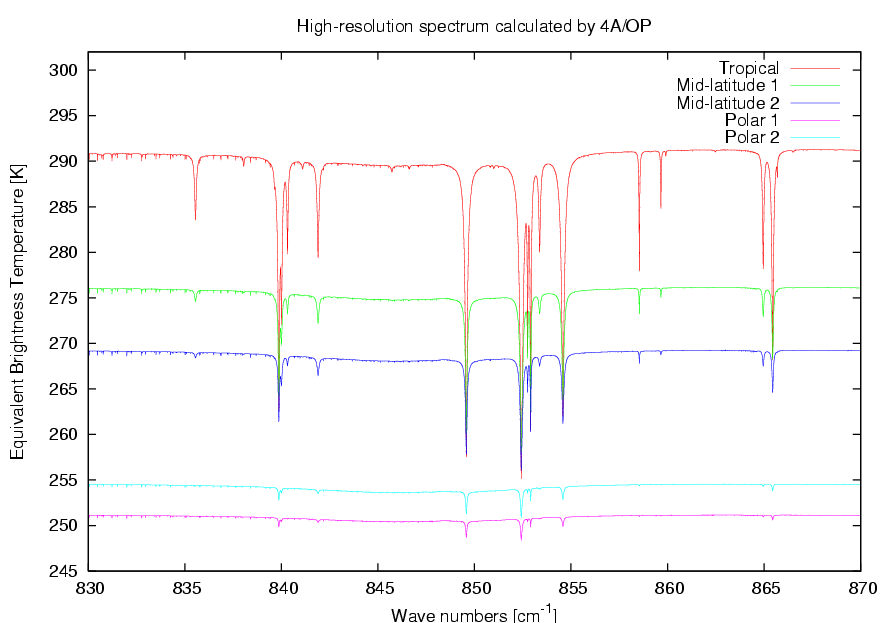
Example 2
The second example is the computation of the convolved radiance (in equivalent brightness temperature) that would be measured by the instrument IASI (Figure 5), from 850 to 900 cm-1, and by HIRS (Figure 7) from 750 to 1000 cm-1. The corresponding Jacobians with respect to the temperature for IASI are illustrated in Figure 6. Click here to see the input parameter file corresponding to IASI.



